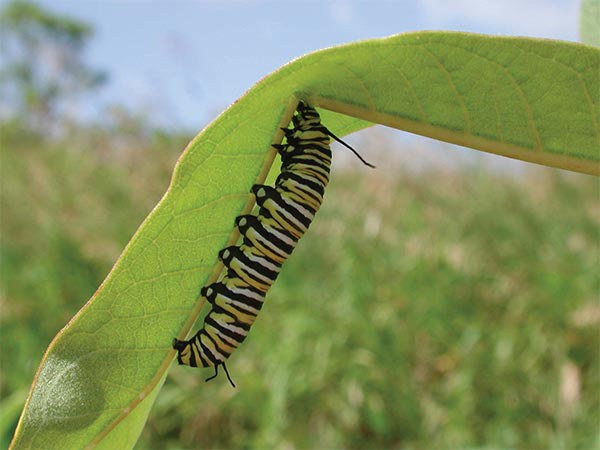
The adage that your enemies know your weaknesses best is especially true in the case of plants and predators that have co-evolved. As the predators evolve new strategies for attack, plants counter with their own defenses.
Milkweed is the latest example of this response, according to Cornell research suggesting that the plant may be shifting away from elaborate defenses designed to thwart specialized caterpillars and toward a more general approach. Whereas in the past, milkweed plants focused on resisting predators, genetic analysis reveals that today’s plants are putting more effort into repairing themselves faster than caterpillars – particularly the monarch butterfly caterpillar – can eat them.
“An important question with co-evolution is, where does it end?” said Anurag Agrawal, Cornell associate professor of ecology and evolutionary biology and lead author of a paper on the subject in the current issue of the Proceedings of the National Academy of Sciences. “One answer is when it becomes too costly. Some plants seem to have shifted away from resisting herbivory (plant eating) and have taken that same energy and used it to repair themselves.” The paper is important because it sheds light on key theories of co-evolution, claiming that pressure by foraging insects makes plants diversify as they evolve new defensive strategies.
Milkweed species have evolved elaborate resistance strategies to fight off caterpillars that eat their leaves. These include hairs on their leaves, heart poisons called cardenolides in their tissues, and milky-white, toxic latex that pours from the plants’ tubes. A caterpillar’s bite into a milkweed leaf leads to a flood of latex that is “like getting a gallon of sticky paint thrown into your face,” said Agrawal.
Some caterpillars, in turn, have adapted by shaving the leaf or cutting a leaf’s veins in a circle and then eating in the middle where the latex doesn’t flow. Also, the monarch caterpillar has become immune to the cardenolides.
Agrawal and colleague Mark Fishbein, a Portland State University biologist, used DNA sequence data to study 38 species of milkweed. They found that milkweed’s three most important resistance traits (hairs, cardenolides, and latex) had declined in the more recently evolved species compared with the older species. These relative newcomers also demonstrated a greater ability to regrow.
Agrawal was surprised, he said, to find that the newer species plant had become more tolerant rather than more diverse in their defenses. The reason, he speculated, could be that, as its predators have become so specialized, the plant was better off choosing a new defensive tactic that tolerated and outgrew the herbivory damage instead of resisting it. It is unknown whether such strategies have also evolved in animals trying to evade parasites.
The findings address questions about plant evolution, biodiversity, and keystone species and may give plant scientists clues about profitable pest control strategies.

